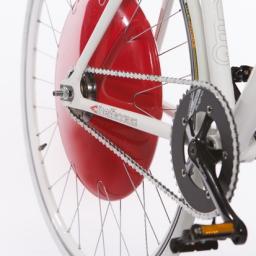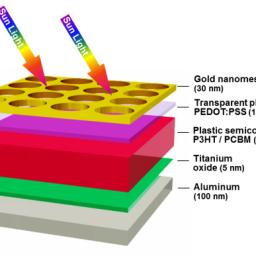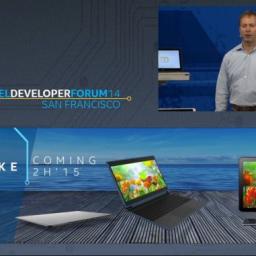CUPS, the Common Unix Printing Specification, has just released version 2.0 of its software.
Mike Sweet, the project founder, reflects here on what makes CUPS 2 different, how printing has changed over the 15 years elapsed since CUPS 1.0, and what printing means in a world full of wifi and cloud-connected devices.
Today our focus on printing is much different than in 1999. Wireless networking and mobile computing are everywhere. We no longer want printer drivers, but expect printers that support standard protocols and formats with fantastic output quality that we could only dream of 15 years ago. And our printing is more focused and personal.
The changes since the previous version of CUPS are actually not all that substantial. This is a minor bug-fix and maintenance release. Specifically:
CUPS 2.0.0 is now available for download. The focus of this major release is on performance and security improvements. Changes since 2.0rc1 include:
The scheduler did not preserve listener sockets from launchd or systemd after a restart ()
Added some USB quirk rules for the libusb-based USB backend (STR #4482)
Spanish localization update (STR #4487)
Updated documentation for 2.0.0 release.
Enjoy!

Interesting new tech if you're into bikes:
the Copenhagen Wheel is a disc-shaped module that can be retrofit onto almost any bike. It's:
... an electric pedal-assist motor fully contained in the oversized red hub of an otherwise normal back bicycle wheel. Inside that red hub is a delicately crammed array of computing equipment, sensors, and a three-phase brushless direct current electric motor that can feel the torque of my pedaling and add appropriately scaled assistance.
Replace the back wheel of any bike with the Copenhagen Wheel and it's instantly an electric bike-one that not only assists the rider but senses the surrounding topography and can even collect and share data about environmental, traffic, and road conditions. First developed in 2009, through a partnership between MIT's Senseable City Lab and the City of Copenhagen, the wheel is now in its first stages of commercial production. By the end of 2014, thousands will be shipped out to fulfill pre-orders around the world.
Sometimes you
do still have to pedal though.
Anyone who doesn't have a pickup needs a friend with one. The design's utility is timeless, as is our occasional need to haul cargo. We're still waiting for an electric pickup, but in the meantime here's Sparky, a converted Nissan Leaf. Engineers Roland Schellenberg and Arnold Moulinet, eager to do a little team-building and create a cool way of moving stuff around Nissan's 3,050-acre Stanfield, Arizona testing facility, led the project.
The front-half is original, but the bed comes from a Nissan Frontier pickup truck. The rear section of the cabin came from a junk Nissan Titan, complete with a power rear window.
http://www.wired.com/2014/09/nissan-builds-funky-electric-pickup-cant/Another option is the ultra-lightweight 275 lb (125 kg) GO-Easy trailer that the smallest cars, or even a motorcycle can easily tow. It also converts into a tent trailer for camping.
http://www.gizmag.com/go-easy-ultralight-trailer-camper/33328/Over at Datamation, Bruce Byfield opines,
"What Linux users don't know about manufacturing open hardware can lead them to disappointment." Interesting stuff.
Both the manufacturing and distribution of digital products is controlled by a relatively small number of companies, whose time can sometimes be booked months in advance. Profit margins can be tight, so like movie studios that buy the rights to an ancient sit-com, the manufacturers usually hope to clone the success of the latest hot product. As Aaron Seigo told me when talking about his efforts to develop the Vivaldi tablet, the manufacturers would much rather prefer someone else take the risk of doing anything new. Not only that, but they would prefer to deal with someone with an existing sales record who is likely to bring repeat business. Besides, the average newcomer is looking at a product run of a few thousand units. A chip manufacturer would much rather deal with Apple or Samsung, whose order is more likely in the hundreds of thousands.
Off hand, it sounds a bit like the same problem independent authors have with big publishing houses: no one wants to buy or publish anything other than a guaranteed best-seller by a proven author, making it hard for the independent guys to get noticed. The article has some interesting insights into what Aaron Seigo and the Vivaldi (Linux-based open tablet) experienced before they abandoned hope for the project.

Considering how ubiquitous LEDs are becoming in our gadgets, phones, and even ambient lighting, it's good to look for efficiencies and process improvements in their manufacture. Princeton University researchers have developed a new method to increase the brightness, efficiency and clarity of LEDs, which may lead to big changes in this technology.
Although they are known for their efficiency, only about 38 percent of light generated inside an LED actually escapes, due to hitting the envelope of the LED at an angle of incidence greater than the critical angle. The trapped light (called total internal reflections) also heats the LED, which greatly reduces its lifespan.
The solution presented by Chou's team at Princeton University is the invention of a nanotechnology structure called PlaCSH (plasmonic cavity with subwavelength hole-array). The researchers reported that PlaCSH increased the efficiency of light extraction to 60 percent. Chou and his team are now conducting experiments to demonstrate PLaCSH in red and blue organic LEDs, in addition the green LEDs used in the current experiments.
This reported breakthrough appears
strikingly similar to one from the University of Glasgow in 2007, similarly reporting the use of cost-effective nanotechnology processes to greatly improve efficiency of LEDs.
PlaCSH technology was first announced two years ago,
reported to offer a 175 percent efficiency improvement to photo-voltaic solar cells, additionally reducing the thickness of the silicon used in traditional solar panels by a thousand-fold, while also being cost-effective to manufacture.
The seemingly on-again, off-again negotiations between IBM and GlobalFoundries over IBM's microchip manufacturing operations may have reached a successful conclusion this week. Dan Nenni, a semiconductor industry writer and consultant, published a story on Tuesday on the SemiWiki website asserting that
IBM and GlobalFoundries have reached a "handshake" agreement on a deal valued at more than $2 billion, "on pretty good authority."
The potential deal is part of the transformation of the computer chip industry toward a "fabless" model under which chip companies outsource their manufacturing to so-called "foundry" companies such as GlobalFoundries and Taiwan Semiconductor Manufacturing Co. The trend has even led companies like Intel Corp. and Samsung Electronics, which still make their own chips, to offer foundry services.
IBM sent shock waves through the industry when it was reported they were investigating a sale of their chip fabrication business earlier this year. IBM has been a stalwart of the world semiconductor industry, inventing DRAM, mastering SiGe, SOI and much more besides and supplies manufacturing process technology to half the world's major companies, including Samsung, Globalfoundries, UMC, STMicroelectronics, Renesas, NEC, Freescale, Toshiba and Infineon.
Electronics Weekly has a good look at the deal, the history, and the implications for the industry.California lawmakers have passed a bill that would enable residential and commercial tenants to install electric-vehicle charging stations, provided that they foot the bill, making it harder for landlords to enact lease provisions that would prevent tenants from buying and installing such stations. This to aid the state's goal of having 1.5 million zero-emissions vehicles on California's roads by 2025.
California is home to about 1,900 publicly accessible charging stations with about 5,400 charging outlets, according to the US Department of Energy. More than one in five US charging stations are in California.

Typically, September and October are a period that sees an uptick in sales of networking hardware - routers, switches, and the like. Not this year. In fact, industry analysts have noted a drop in sales, and
attribute it to increasingly widespread corporate investments in software defined networking (SDN) equipment.
Industry heavyweights like Google, Amazon, Facebook, and others are already heavily invested in OpenFlow and SDN, but it seems to be taking hold on a much wider scale, and not just in ultra-massive data centers.
"We're at the beginning if the S curve [in SDN] with Google, Facebook, Amazon, and NTT adopting and a few others actively deploying it, but it will be several years before it is mainstream," said Guru Parulkar, the chair of the event and executive director at the Open Networking Research Center that works on SDN.
"We will build network infrastructure with white boxes running merchant silicon, open-source network OSs, and services. This will not happen overnight, but it will come."
In the SDN vision, many tasks will be handled as applications running on Linux servers, said Dan Pitt, executive director of the Open Networking Foundation behind the OpenFlow protocol: "The future of the network is Ethernet, x86, and OpenFlow -- nothing is controlled by a single party, it's all community based."
Bad news for Cisco and friends, but they're only suffering what the desktop computer makers suffered a decade ago, and Sun and the rest of the server manufacturers before them.

Intel has released
more information regarding the availability of Skylake, their successor to Broadwell. The first surprise is that Skylake is
still on track for an end of year release in 2015. After the delays with Broadwell, many thought that the Skylake roll-out would be similarly pushed back. Because of the lack of delay, the first Skylake chips will ship to manufacturers only a few months after the general availability of desktop Broadwell models.
Another surprise is that the Intel Gen 9 graphics
completely do away with VGA connector support. That's right, the
15 pin analog "D" shaped connector is finally getting nixed - at least from the built-in Intel graphics.
Unlike Broadwell, which only supports DDR4 memory on the server and the extreme versions, Skylake will finally support DDR4 on consumer rated models.
Bell Labs, once dominant innovators in the field of technology has long since fallen from glory. Their old research center, where many of their inventions took shape (including the touch-tone telephone!) has been vacant since 2007.
Now, it looks like the historical building is finding new life.
As far back as the 1930s, the site was a research center for AT&T. The scientists who toiled here were pioneers in developing the transistor, cellphones, touch-tone dialing and fiber optic communications, amassing seven Nobel Prizes.
But since 2007, when the property was closed by Alcatel-Lucent, which had acquired it in a spinoff from AT&T, the structure's fate has been uncertain. At one point, another developer proposed demolishing it, setting off an international outcry from scientists and architects who feared the loss of a piece of intellectual history and an architectural gem.
...The redevelopment plan, which would cost well over $100 million, could transform the former Bell Labs building into a commercial center for Holmdel, a community of about 17,000 people. With no downtown, most of the town's retail properties now sit along busy Route 35.



